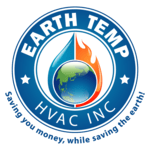How To Change Your Home Air Filter! Critical…
- At the main circuit breaker, switching off the power to the furnace. Always be careful!
- Locate and uninstall your new furnace filter. It should be hidden behind a panel that unscrews or slides off.
- If you know the filter’s measurements, write them down; if you don’t, simply weigh it.
- To avoid the spread of allergens, place your old filter in a garbage bag and get it out of the house right away.
- Look for the airflow arrows that indicate how to properly place the new filter before installing it. Installing backwards has the potential to reduce performance.
- Remove the cover, slip the new filter into its position and replace the cover.
- Turn the power back on at the breaker, smile, and take a deep breath of fresh air!
Changing Your Furnace Filter
Air purifiers with HEPA filters are more effective, but they can only clean one room at a time.” If your home has a boiler and radiators, you won’t have to think about
changing furnace filters because there won’t be anywhere for them to go. Most modern HVAC (Heating, Ventilation, and Air Conditioning) systems, on the other hand, have a slot for an air filter.
Why You Need To Change Your Furnace Filter on Time
It’s easy to forget to change your home furnace filter on a regular basis but it is critical. The furnace filter is always out of sight and therefore out of mind. You may not even know where your HVAC filter is if you live in an apartment. If that’s the case, go find it right away! If required, call your leasing office and inquire. Furnace filters are critical for maintaining good indoor air quality.
Standard Furnace Filters vs. High Efficiency Furnace Filters
Fiberglass filters are inexpensive and only eliminate large airborne particles that could damage the HVAC system. A High Efficiency Furnace Filter is needed if you want to eliminate smaller
allergens from your air supply. Pollen, mold, pet dander, and dust are all removed by high-efficiency filters. Some of the most common disposable filters we offer are 3M Filtrete Furnace filters.
Unlike conventional disposable filters, 3M uses a new MPR (micro-particle rating) to calculate efficiency levels for particles smaller than those typically calculated by traditional MERV scores. In the short term, this makes comparing filters a little more difficult, but when new test data becomes available, we will update our pages and keep you as up to date as possible. Minimum Efficiency Report Value (MERV) is a measurement of a filter’s ability to trap allergen-sized particles. The MERV rating indicates how well a filter captures allergens.
The higher the MERV rating, the better. Many people prefer furnace filters that are permanently installed. The low air flow resistance of these permanent filters improves the performance of your HVAC system. Simply remove the filters, take them outside, and squirt them off with a hose when they need to be washed. When it comes to removing allergens, the Contractor’s Choice electrostatic filters aren’t quite as effective as the Allergy Zone filters, but they do have excellent air filtration and provide an antimicrobial agent to prevent the growth of germs, bacteria, mold, and mildew.
MERV 1-4:
This selection of filters offers the least amount of filtration. It’s the best option if you’re looking for a low-cost filter that keeps dust off of your appliances while doing nothing to increase indoor air quality.
MERV 5-8:
For most homes, this is the ideal range. It works well at trapping smaller particles that aggravate allergies while allowing air to circulate freely.
MERV 9-12:
MERV 13-16:
MERV 17-20:
A filter with a MERV of 17-20 is known as a High Performance Particulate Absorption (HEPA) filter. It’s more commonly used in vacuum cleaners than in HVAC systems.
Recognize The Needs Of Your Home
- Without pets or allergies, a vacation home or a single occupant: Replace the filter every 3 to 6 months.
- Change the filter every 90 days in a “average” suburban home without pets.
- If there is only one dog or cat in the building, the filter should be changed every 60 days.
- There are two or more dogs or cats in the house: Every 30 to 45 days, replace the filter.
- Someone in your family suffers from allergies or has other respiratory issues: Every 30 to 45 days, replace the filter.








